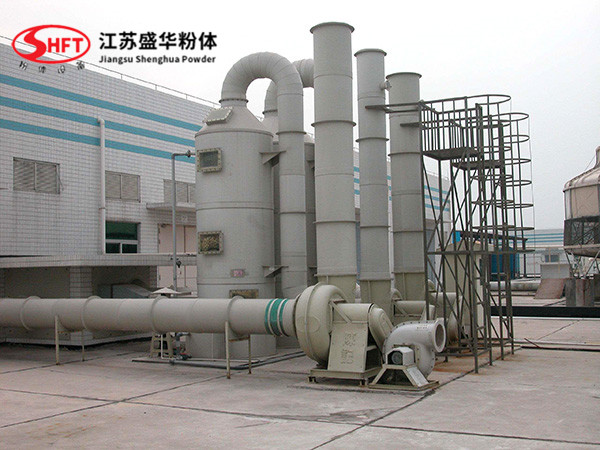-
tel: +8617802596658
-
email: shpowderseparator@gmail.com
-
Whatsapp: 8617802599580
Desulfurization and Denitrification Equipment

The desulfurization and denitrification equipment system generally consists of an ammonia storage system, an ammonia and air mixing system, an ammonia injection system, a reactor system, an economizer bypass, an SCR bypass, a detection and control system, etc.
Liquid ammonia is sent from the liquid ammonia tank truck to the liquid ammonia storage tank by the unloading compressor, and then evaporated into ammonia gas through the evaporator tank and enters the boiler area through the ammonia buffer tank and the conveying pipeline. After being evenly mixed with air, it enters the SCR reactor through the distribution pilot valve for internal reaction. The SCR reactor is set in front of the air preheater. Ammonia is evenly distributed and mixed with flue gas above the SCR reactor through a special spray device. After mixing, the flue gas undergoes reduction reaction through the catalyst layer in the reactor.
The main technical parameters of the SCR system design include the NOx concentration at the reactor inlet, the reaction temperature, the space velocity or the residence time of the reducing agent in the reactor, the NH3/NOx molar ratio, the escape amount of NH3, the denitrification efficiency of the SCR system, etc.
Ammonia storage and mixing system
The ammonia storage system of each SCR reactor consists of an ammonia storage tank, an ammonia/air mixer, a fan and valve for ammonia dilution, an ammonia evaporator, etc. The ammonia storage tank can hold anhydrous ammonia for 15 days, can be filled to 85% of the tank volume, and is equipped with a liquid level meter and a temperature display. The liquid ammonia vaporization adopts electric heating, and the pressure in the ammonia/air mixer is protected at 350 kPa. The uniformity and dispersion of NH3 and flue gas mixing are the key to maintaining a low NH3 escape level. In order to protect the good dispersion and uniform mixing of flue gas and ammonia in the flue, the following methods can be used to protect the mixing: install a static mixer in front of the reactor; increase the energy of NH3 injection; increase the number and area of injection points; improve the dispersion and direction of injection; set a guide plate in the flue after NH3 injection; at the same time, the structure of the ammonia injection system should be optimized according to the results of the cold flow model test and the results of the mathematical flow model calculation.
Ammonia injection system
The ammonia injection system controls the amount of ammonia injection according to the feedback signals of boiler load, reactor inlet NOx concentration, and reactor outlet NOx concentration measurement.
Reactor system
The SCR reactor adopts a fixed bed form, and the catalyst is placed in a module. The number of catalyst layers in the reactor depends on the required catalyst reaction surface area. The typical layout is to arrange two to three catalyst layers. Above the upper catalyst layer is a catalyst-free rectifying layer, which is used to protect the flue gas from being evenly distributed when it enters the catalyst layer. Usually, there is a spare space under the third catalyst layer so that the fourth catalyst layer can be added when the catalyst activity decreases. A soot blowing device is set between the catalyst layers of the reactor, and soot blowing is carried out regularly. The blowing time is 30 to 120 minutes, 1 to 2 times a week. If necessary, regular cleaning of the reactor should also be carried out. An ash hopper is provided under the reactor, which is connected to the ash discharge system of the power plant and ash is discharged regularly.









